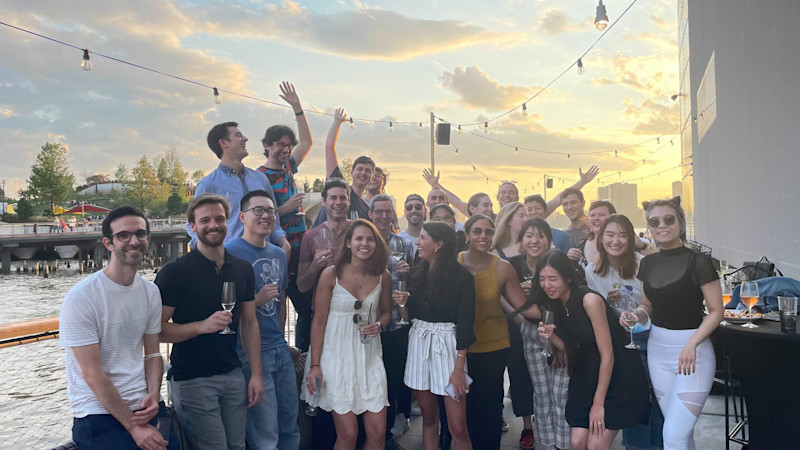- Iterate
- Meet The Team
- How to Hire at a High-Growth Startup, According to Bubble's Head of People
How to Hire at a High-Growth Startup, According to Bubble's Head of People
Table of contents
The Org spoke with Colleen Tucker and identified some of the most important things to keep in mind when hiring for a high growth startup.

After spending 11 years of her career at DTC eyewear startup Warby Parker, where she was one of the first employees and most recently held the title of Director of People Strategy and Workplace Operations, Colleen Tucker had an itch to try something new. She found her way to Bubble, a no-code visual program development platform, where she now serves as Bubble’s Head of People.
Bubble allows its users to create interactive, multi-user applications for desktop and mobile browsers. It was founded by Emmanuеl Straschnοv and Josh Haas in 2012 and recently raised an $100 million Series A.
Currently are about 65 employees at Bubble, and Tucker says that Bubble hopes hope to double in size by the end of 2022. Although most employees are based in New York City and has a handful of employees who are working remotely in different locations, the company has a remote-first policy.
“We want to allow people to work where they want to work,” Tucker told The Org. “But we also have an office for those who miss the face time and the routine of going into a collaborative workspace to get work done.”
The Org spoke with Tucker and identified some of the most important things to keep in mind when hiring for a high growth startup.
The key qualities in a candidate for a high-growth startup
Beyond the technical skills and competencies that are posted in a job posting for the company, Tucker says that one of the most important qualities she looks for in a candidate is someone who truly believes in the product’s mission and purpose.
“If you hire someone who is just looking for a job, they will not be as committed and willing to deal with the inevitable headwinds, stresses and tough moments that come with working at any high growth company,” Tucker said.
Another quality that Tucker believes is important in a candidate is someone who can show that they are autonomous in their work and don’t fail to do research on the company before applying.
“We look for people who want to see problems all the way through and are generally intellectually curious and adaptable,” Tucker said. “I had a candidate who wasn’t interviewing for a technical role but they actually took the time over the weekend to build a very basic application using Bubble, which showed a level of interest and commitment that you can’t fake.”

A fair recruiting process for applications
Something top of mind for recruiters today is ensuring that their hiring process is fair for all candidates. For Tucker and the team at Bubble, this means writing out detailed job descriptions that include clear and concise objectives, skills and qualities that the hiring manager is looking for in the candidate they are hiring.
“We have a very objective list of trains which then translate into interview questions as part of the process,” Tucker said. “We’re evaluating our candidates against this objective criteria.”
Tucker believes that a structured interview process is only as good as the people interviewing, so at Bubble, interviewers will shadow each other and provide feedback to each other, and also have scorecards to ensure that diverse candidates are equally evaluated.
“For senior leadership positions in particular, we are committed to interviewing at least one diverse candidate which could be in terms of race, ethnicity or gender – it’s really important that we’re actually getting a diverse pipeline,” Tucker said.
In order to measure the success of these diversity recruiting efforts, Tucker plans to do regular current state evaluations of the company.
“At the end of the day, a lot of DE&I initiatives are recruiting initiatives and the end goal is to increase representation at your company across levels and roles,” Tucker said. “There’s also a slew of more granular metrics you can measure and report on through the process such as pass through rates and who’s moving from one stage to the next in terms of race, ethnicity and gender.”
Create your own free org chart today!
Show off your great team with a public org chart. Build a culture of recognition, get more exposure, attract new customers, and highlight existing talent to attract more great talent. Click here to get started for free today.
In this article


The ORG helps
you hire great
candidates
Free to use – try today